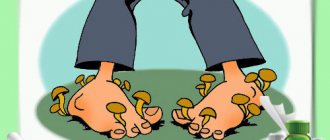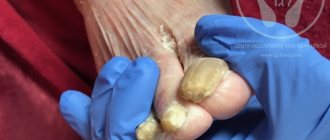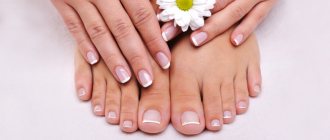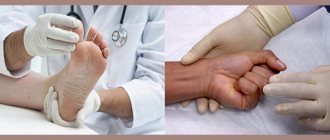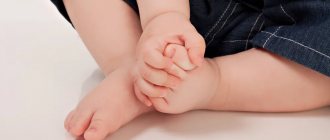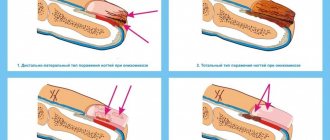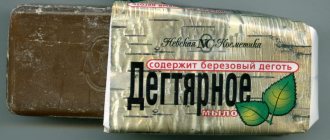A podiatrist is a specialist who specializes in treating pathologies of toenails and feet. Just 10 years ago, few people had heard of this profession, and finding a competent expert was difficult.
But you can’t argue with the statistics: more than 50% of people experience nail diseases, calluses, corns, and foot deformities. This percentage is growing every year, which means the answer to the question of whether a podiatrist is needed at all can only be affirmative. The profession is in demand, especially among older people.
Who is a podologist?
A manicurist, pedicurist with deeper knowledge, or a doctor like a gastroenterologist, cardiologist, or neurologist?
In fact, neither the first nor the second. Let’s be honest: in Russia, the profession of “podiatrist,” as in other CIS countries, is not included in the list of medical specialties, so legally a podiatrist is not a doctor.
In Europe, America, Canada and other foreign countries the situation is different. There, the profession of podiatrist is officially recognized. Podologists are seen in clinics and hospitals. They collaborate with orthopedists, traumatologists, surgeons, and dermatologists. Although, to become and work as a podiatrist, basic medical education is not required.
Compared to a pedicurist and manicurist, a podiatrist’s work is aimed at preserving the health of the feet, care, identifying pathologies in the early stages, and treatment. This requires knowledge of anatomy, biomechanics, and physiology of the foot, which he receives in specialized courses. And clients come to a pedicure or manicure specialist for external beauty: to apply makeup, nail extensions, apply gel polish, and get a design done.
What does a podiatrist do?
A podiatrist provides nail treatment and care. Deals with complications of injuries, dermatological, endocrine, orthopedic diseases that affect the foot.
At the reception, the podologist:
- Performs medical pedicures without applying decorative varnish.
- Consults on the care of nails and skin of the feet, recommends products for home use, taking into account the client’s skin type and problems.
- Treats nail fungus (onychomycosis), cleans the affected areas of the nail plate, selects medications, and, if necessary, refers to a mycologist.
- Helps with peeling or ingrown nails, installs corrective plates, staples, tamponade.
- Corrects distortions in the shape of the nail plate.
- Treats changes in the skin of the feet (calluses, corns, cracks, hyperkeratosis).
- Selects interdigital correctors, insoles, orthoses.
- Provides care for problematic feet with diabetic foot syndrome and in older men and women.
Due to the use of modern techniques, tools and materials, sessions with a podiatrist take place without pain or with minimal discomfort. When identifying diseases, he conducts a thorough examination, questioning, and finds out the cause so that there is no relapse in the future.
Causes of the disease
Various types of fungi can cause mycosis: white superficial, normotrophic, atrophic, proximal, total, yeast, mold, dermatophytes.
Infection occurs when a pathogenic microorganism penetrates into the deep layers of the dermis or into the bloodstream through microscopic damage to the skin.
Basically, the infection enters the body when:
- sharing common hygiene items with a sick person;
- wearing someone else's shoes;
- visiting a swimming pool or sauna;
- a visit to a manicure salon if sterilization rules are not followed.
Increase the risk of developing mycosis:
- failure to comply with personal hygiene rules;
- increased sweating;
- wearing synthetic socks and tight shoes;
- dermatological problems;
- vascular and metabolic diseases;
- elderly age;
- excess weight;
- weakened immunity.
When to contact a podiatrist?
A consultation with a podologist will not hurt anyone, including even a child. He will teach parents how to properly care for and cut their baby’s nails. This is important, since correct foot care habits instilled from childhood are the key to the absence of problems in the future.
Teenagers will learn about hygiene rules, how to choose shoes, and what coatings are safe to use to decorate the nail plate on their feet.
For adults, a podiatrist does therapeutic and preventive pedicures and works with existing complaints. Everyone over 40 years old needs his consultation at least once a year. Especially for people who are overweight, women who wear shoes with narrow toes, high heels every day, as well as those whose professions involve intense stress on the lower extremities.
Older people need to visit a podiatrist regularly. The risks of diseases of the nails and skin of the feet increase with age, and it is better to identify them in the early stages. For example, nail fungus occurs in half of people over 60 years of age.
Reasons to contact a podiatrist include:
- core calluses, corns, cracks;
- increased blood glucose levels;
- excessive sweating of the feet;
- plantar warts;
- nail fungus;
- ingrown nail;
- frequent cramps in the foot area;
- pain, feeling of heat, cold, itching, burning in the feet;
- swelling of the legs;
- delamination, curvature, change in color of the nail plate;
- uneven wearing of shoes;
- foot deformity (bump on the big toe or little toe, flat feet, clubfoot, hammertoes, etc.).
Non-infectious nail diseases: changes in shape, size and condition (onychodystrophy)
Hippocrates nails
In patients with problems of the cardiovascular system, liver, lungs, tuberculosis, cystic fibrosis, and other chronic diseases, the terminal phalanges of the fingers are often deformed (expanding, reminiscent of drumsticks) and with them the nail plates take on the appearance of watch glasses - they are convex, shiny, dense . This is also called "Hippocratic nails". After recovery, these phenomena disappear.
Onychogryphosis
The nail plates are curved and have the appearance of a claw. Causes of appearance on the toenails: long-term mechanical injuries when wearing tight shoes, circulatory disorders of the lower extremities, onychomycosis. Often, downward-growing, “pecking” fingernails are called onychogryphosis. This condition is not a disease and occurs on the index fingers of almost every person, but it manifests itself to varying degrees. An experienced master can visually correct this defect using modeling materials.
Onyhauxis
The nail is thickened due to an increase in the subungual horny substance. As a rule, there is no curvature. The nail plate itself is little changed. It occurs in eczema, psoriasis, inflammation of the nail folds and nail bed, including those caused by fungi, that is, it is a concomitant symptom. Sometimes you can see it on those toes that experience the greatest mechanical stress due to uncomfortable shoes. If this problem occurs, do not re-wear the durable coating.
Micronychia
Small nails. It can be a birth defect or accompany common diseases, but more often occurs in people who bite their nails. In such cases, extensions covering the front cushion help: the artificial material is hard and hard, biting it off is quite difficult and the bad habit recedes for a while.
Koilonychia
The nail plate is concave in the shape of a spoon. Common cause: prolonged exposure to acids and alkalis. The nails of 1-3 fingers of both hands are affected.
Beau-Reilly transverse grooves
They are a consequence of disturbances in the matrix due to short-term exposure to injuries, common serious diseases (pneumonia, measles, hepatitis, etc.), as well as skin diseases (psoriasis, eczema, pemphigus, etc.). An incorrectly performed manicure, which resulted in trauma to the growth zone of the nail, can also be the cause of this type of nail. Depending on the degree and depth of the lesion, it either disappears in a short time, or (in the case of scarring of part of the matrix) remains forever.
Longitudinal furrows
They are observed in healthy people, more often in the elderly. They can also be a sign of lichen planus (which is extremely rare in the modern world). A type of this dystrophy is a deep groove in the form of a canal.
Thimble-shaped or pinpoint wear of the nail
A typical change in psoriasis, but it can also occur in other skin diseases, rheumatism, tuberculosis. It can also occur in healthy people.
Onycholysis
Separating the nail plate from the nail bed from the free edge. Sometimes lateral onycholysis also occurs, when only the lateral wall of the nail in the sinus is separated. Causes: psoriasis, eczema, intoxication, bacterial and fungal infections. Often, the cause of temporary detachment can be an incorrectly performed hardware manicure, thermal and chemical burns when covering with resistant materials, or the use of roughly abrasive files in the wrong technique. It is forbidden to cover such nails with persistent materials, that is, gels, acrylic and gel polish. An experienced master (podiatrist), if the client has a certificate of the absence of fungus, can clean, remove exfoliated areas and replace them with a special gel for prosthetics (but not any gel or acrylic for extensions).
Onychorrhexis
Splitting of nails in the longitudinal direction. Causes: endocrine diseases, psoriasis, eczema, lichen planus, exposure to alkalis, solvents. Also found on dry, aging hands. You can strengthen such nails with hard materials and cover them with gel polish.
Onychoschisis
Splitting of nails in the transverse direction from the free edge. The main reasons: the action of solvents, alkalis, low-quality varnishes. It is also found in musicians suffering from psoriasis, eczema, and lichen planus.
Anonychia
Lack of nail plates. May be congenital or acquired. It is noted in psoriasis, mycosis. The nail bed in this condition is lumpy, red or gray in color, and peels off. When the causes of anonychia disappear, a normal nail grows back.
Senile nail
The nail plate is gray, dull, with longitudinal grooves, peels, and is accompanied by onychogryphosis. Nail growth is slow. Changes occur as a result of deterioration of blood circulation in the matrix and nail bed: the plate is drier and curls.
Pterygium
Overgrowth of the nail skin covering the entire nail. It may be a congenital characteristic of a person or the result of an injury to the growth zone.
Softening of the nail (hapalonychia)
Nails are easily knocked down and split. There is true hapalonychia as a result of endocrine disorders and acquired - from exposure to alkalis, acids, and solvents.
Brittle nails
When working with petroleum products, alkalis and acids, low-quality manicure varnishes. It can also appear as a result of injury to the nails due to inept manicure or using cheap tools and materials.
How to choose a specialist?
To find a good podologist in Moscow or another city, you will have to analyze a lot of information. The difficulty is that in Russia there is not yet a legislative framework regulating podological practice and standards defining this profession. Therefore, there is a risk of getting to an inexperienced specialist with insufficient qualifications.
Each podiatrist bears responsibility for the quality of personal education and skills. It is important that he is competent, interested in professional development, and strives to help the client, and not to earn money for an appointment.
When choosing a podologist:
- look where he works, whether this place inspires confidence;
- read reviews about the work of a podiatrist from real people;
- inquire about education, diplomas, certificates;
- evaluate working conditions, cleanliness, equipment, sterility;
- check your readiness to answer questions and explain actions.
People are sometimes scared by how much podiatrist services cost, so they refuse to go to an appointment, hoping that everything will go away on its own. They begin treatment themselves using folk remedies or look for cheaper options. Procedures from a professional podologist cannot be cheap, because he uses expensive instruments, drugs, devices, and invests in education and advanced training.
Following low prices, there is a chance to get to novice specialists who want to get practice and gain experience.
Who will replace the podiatrist?
If there is no podiatrist in your city, a doctor from the clinic or a manicure-pedicure specialist will help with some foot problems.
Who to choose depends on the type of violation:
- calluses – pedicurist;
- onychomycosis – dermatologist, mycologist;
- ingrown toenail – surgeon;
- flat feet and other types of foot deformities - orthopedist, traumatologist;
- diabetic foot – endocrinologist, surgeon, neurologist.
But when contacting them, you should not count on comprehensive treatment, clarification of the cause of violations, or measures to prevent relapse. Doctors will help relieve the acute condition, remove pain, inflammation, but no more. In the absence of a podiatrist, it is most difficult for people with several problems at once, since in this case it is not clear where to turn first.
For example, nail fungus or ingrown toenail due to diabetes.
It is easy to understand how the approach of a doctor and a podologist differs, using the example of treating an ingrown toenail. The surgeon will simply remove the nail or a significant part of it, which will result in an unpleasant rehabilitation with an unknown result.
After all, after such treatment, the likelihood of relapse will be high. Unlike a surgeon, a podiatrist will install a bracket or a correction plate on the nail, which will correct the direction of growth and relieve pressure on the sore spot. The procedure will be painless, and the nail plate will be preserved as much as possible. The podiatrist will also find out the cause of ingrown toenails, advise on how to change nail care, and choose shoes so that the situation does not recur in the future.
Non-infectious nail diseases: color changes (onychodyschromia)
Primary changes in nail color
Associated with changes in the color of the nail plate. Possible in connection with taking medications or certain products. For example, the antimalarial drug agebrin can cause a bluish or yellow-green color, while resokhin can cause a bluish-black color. If you overeat carrots, your nails may turn yellow. Also, using highly pigmented nail polishes can lead to staining of the nail plate.
Secondary changes in nail color
Occur in the nail bed . The red-violet color of the nail is observed in people with heart disease, yellow - with liver disease, bluish - with a lack of oxygen. White nails are observed with diseases of the adrenal glands, milky white - with cirrhosis of the liver, pale pink - with low hemoglobin content in the blood.
Leukonychia
A fairly common condition of nails in the form of white spots, dots or stripes on the plates. They occur due to air bubbles between the layers of the nail, bruises or any other injury to the nail. And also due to insufficient keratinization of a separate group of onychoblasts, which can be caused by both injury and internal causes. Also, a deficiency of iodine, zinc, and copper can lead to the appearance of white spots. Leukonychia cannot be corrected, but gradually the affected areas are eliminated on their own due to the natural growth of the nail.
Hemorrhage
When a nail is injured, hemorrhages occur in the nail bed at the site of rupture of blood vessels. In this case, a dark purple, blue, and sometimes black spot appears under the nail plate, which moves forward as the nail grows until it disappears. This phenomenon often occurs after bruises. If the effusion is extensive, the nail may fall off; it is not recommended to apply gel polish.
Melanonychia
It looks like a black stripe under or inside the nail plate that runs from the base of the nail to the free edge. In some cases, this strip can cover the entire nail plate. It appears due to the deposition of melanin in the nails. Typically this occurs within the base of the matrix bed. When cells form the matrix of the nail plate, melanocytes stain it with melanin. As the nail plate grows towards the free edge, a dark stripe of melanin becomes visible. This condition affects many people with dark skin. It affects almost 100% of African Americans over 50 years of age and approximately 15 - 20% of Japanese. In people of Caucasian nationality, cases of melanonychia are extremely rare. If melanonychia is observed, malignant melanoma may be present. Manicure services can be provided to clients with melanonychia.
